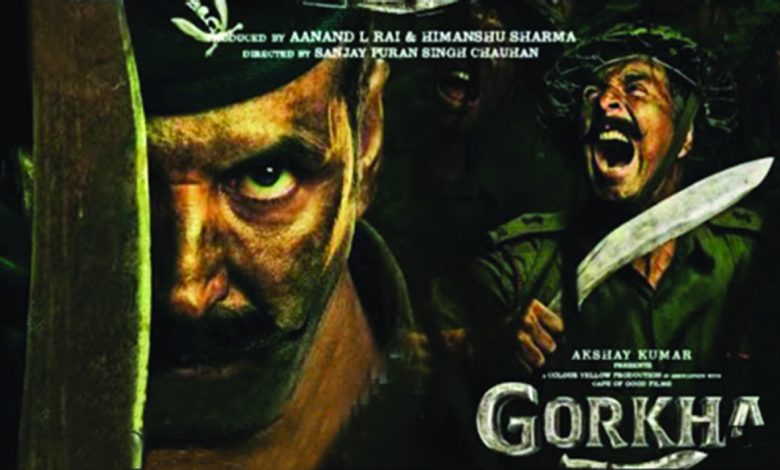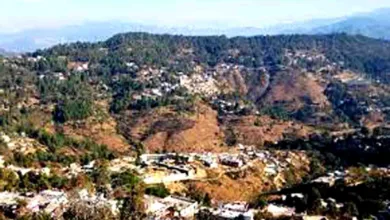Gorkha is Cardozo’s fabricated war glory

Thursday, 16 December 2021 | Rattan Kaul
Bollywood has made a mockery of war films. In an attempt to glorify the soldier, it has lowered Ian Cardozo’s dignity by redundant but popular embellishments
They say that if a lie is told many times, it turns into truth. Bollywood is now making a biopic film called ‘Gorkha’, in which fiction is sought to be converted into fact and factual history overlooked. This has reference to the ‘cult’ of Maj Gen Ian Cardozo of the 4/5 Gorkha Rifles. The story goes that in the Battle of Sylhet, Cardozo injured after he stepped on a mine, used his khukri (a type of machete) to amputate his own leg before a surgeon operated upon him. The problem is that the film producer has gone by popular battle accounts of Maj Gen Ian Cardozo in the interviews he gave to journalists and material from his books, rather than the factual history and recorded write-ups by the then Commanding Officer Brigadier Harolikar MVC and myself.
A number of video films, patently unauthentic, valorising Maj Gen Cardozo have been mysteriously doing rounds for some time now. Already, a team of officers of the 4/5 Gorkha Rifles (FF) is contesting the ‘Alleged Act of Bravery’ (AAB) of the then Second in Command, in the Sylhet Battle (December 6-17, 1971).
He claims he cut his foot with his khukri, whereas it was the Regimental Medical Officer who cut his dangling ankle. Cardozo stepped on a NM14 laid by my Company and, therefore, is a battle accident casualty. He has made many claims during Sylhet Battle to enhance his own leadership, undermining the leadership in the conduct of the Sylhet Battle of Commanding Officer Lt. Col Arun Harolikar, who was awarded the Maha Vir Chakra. We, the officers who fought the Battles of Atgram (Nov 20/21), Ghazipur (Dec 4/5) and Sylhet, want to preserve the dignity, honesty and respect of the battalion and want the truth and nothing but the truth to be known to all.
Bollywood has invariably made a mockery of war films. In its attempt to glorify the soldier, it has lowered his dignity by redundant but popular embellishments. Unfortunately, films are first made and then authenticated by the Military/MoD for fact and form so that the image of armed forces is preserved. The biopic on legendary Field Marshal Sam Manekshaw was hugely publicised but gradually evaporated. No one knows what happened to it. Gorkha will impact our neighbour Nepal from where majority of Gorkhas come and where several films have been made on Gorkhas like Gorkhali Paltan, Gorkhas, Gorkhali, Lahure and Gurkha. The hero of the Indian film Gorkha will not be a Gorkha but a Goan.
Cardozo is not the first one indulging in creative bravery. One can recall the case of Ketchup Colonel (about an officer who faked photos of ‘slain militants’ by splashing tomato sauce on them in August 2003 near Silchar in Assam), a fabricated encounter at Siachen and the staged Pakistani attack on own post in Mendhar in J&K, all inspired by valour-mania.
War diaries maintain the chronology of battle. Battalion and regimental histories record troop performance in war and field areas. Sometimes these are written inaccurately, adding, deleting and altering content. But ‘Gorkha’ most likely will be based not on factual history but a fabricated autobiography. The AAB claimed by Cardozo occurred in the 1971 war at Sylhet. There is no mention of AAB in the only authentic account of the war — in ‘Bravest of the Brave’ written by Harolikar. It notes that the Second in Command stepped on a mine and was injured and evacuated.
Cardozo claimed AAB only after his Commanding Officer Harolikar had died in 2007, starting around 2011/12, through interviews given to journalists like Claude Arpi, Mohan Guruswamy, Barkha Dutt and several others. Interviews about AAB were so many between 2011 and 2021 that the original version changed almost each time, giving rise to contradictions. In addition, in his interviews, he let pass journalists’ accounts that he commanded the battalion in Battle of Atgram (Nov 20/21, 1971).
The Battle of Atgram, famous for the ‘khukri attack’, was possibly the last such khukri assaults in the history of modern warfare, surpassing the previous recorded attack in the Battle of Bau (Nov 1, 1965, Borneo) by the 2/10 RGR. The Battle of Atgram was a unique attack, with the soldiers infiltrating behind Pakistani defences through knee-deep marshes in an unchartered area without any artillery support. Our two companys, one of them mine, penetrated the defences of Atgram, unsheathed the khukris and, in a matter of just 90 minutes, annihilated a full company —the Bravo Company 31, Punjab, Pakistan Army. Those killed included their Company Commander Major Azhar Alvi who, feigning death, jumped up and tried to kill CO Brig Harolikar and me. Not that the Pakistanis were cowards, but the khukri-wielding Gurkhas of the battalion were braver. Unfortunately for Cardozo, he forgot that we both arrived in the Battle Zone of Sylhet by the same helicopter on December 9 and he was evacuated after the mine accident on December 16, and was nowhere near Atgram.
It is instructive to note the
following facts:
a. An eye-witness account by Colonel (then Major) Manmohan Malik SM (C Company Commander) in Sylhet Battle has rejected the AAB claim outright, saying he does not comprehend why the General Officer has falsified the accident and that when Regimental Medical Officer was attending on Cardozo, he was present and placed his head in his lap to comfort him.
b. Our Regimental Medical Officer Capt DK Sengupta, who performed the operation after the minefield accident died in May 2021, through his recorded statement confirms the eyewitness account. His son Anindiya Sengupta has testified in writing his father’s recall of the AAB and called it ‘mythical’. He pointed out discrepancies on a Discovery channel programme glorifying AAB, where Cardozo sings a different tune that the doctor was “taking time”. It is also recorded that Cardozo expressed his gratitude to Sengupta, that “he may forget his parents but not him (Sengupta)”. Sadly, Cardozo did not even acknowledge Anindya’s message conveying the death of his father.
c. Another officer from 4/5 Gorkhas, who was near the accident site, has also rejected Cardozo’s claim. None of us from the unit support his claim as all along we knew that his dangling ankle was cut by Sengupta and further surgical intervention was done by Pakistani surgeon Major Mohummad Basheer FRCS at the Pakistani Field Hospital at Sylhet, as the complete garrison had surrendered a day earlier (Dec 15). Retired Gorkha soldiers of the battalion in Nepal, who fought the Sylhet Battle, recently recalled they never heard during and after the war that Cardozo saab had cut his leg with his khukri.
d. The General Officer sought the help of a Bangladeshi officer, who was part of the Mukti Bahini then, to record two video clips, both contradictory, claiming to have been nearby (impossible) in corroborating the AAB. None of the four officers from the battalion who fought the Sylhet battle is ready to verify his claim.
e. Several senior officers of the regiment are anguished that Cardozo, the spirited and brave General officer, would resort to fabrication of battle accounts for self-glorification. Incidentally, his Sena Medal earned in 1962 is not for gallantry in the face of enemy but for distinguished service while leading a patrol and certainly not for the 1971 war.
If Akshay Kumar wants to enact the heroics in combat, there are at least 150 PVC and MVC winners to focus on. And hundreds more who have shown exceptional bravery in war or fighting insurgency and terrorism.
Brig (Retd) Rattan Kaul is a defence management expert. Belonging to 4/5 GR(FF), he was assault Company Commander at Atgram (Nov 20/21, 71) and a Forward Road Block Commander in the Battle of Sylhet. He was seriously injured in the Battle of Sylhet. The views expressed are personal.






